Lexly, Elaina and Charlotte
This morning we started our day with a 7 am bird walk to look for terrestrial birds and discuss biodiversity surveys as a method to gather data for surrounding biodiversity. We observed a giant king fisher and its nest, sunbirds, tropical boubous, and ring neck doves.
We finished our article presentations throughout the day. We listened to presentations by Chloe, Elaina, Lexly, Charlotte, David, and Arjun and had the opportunity to discuss each subject. We gained insights through Chloe’s presentation about the evolutionary origins of species assemblages and Arjun’s presentation on the evolution of African plants. David presented his article focused on using satellite data to model chimpanzee habitat in Africa and provided insight to the importance of computational modelling in conservation. Elaina presented on culture-based tourism, Charlotte presented about cultural and biological significance of Kaya forests, and Lexly’s was about the effectiveness of community-based conservation. All in all a varied and informative set of presentations!
We had the opportunity to welcome a guest lecturer Silas Wanjala of the Lake Naivasha Riparian Association. He discussed the ecohydrology of Lake Naivasha. We learned about the catchment of the lake and about what makes Lake Naivasha unique in the area, as well as the variety of human activities that have influenced the water quality and lake ecosystem. Silas emphasized the importance of riparian zones for healthy ecosystem function and the conservation strategies to preserve these areas of vegetation.
Around 2:30 pm we ventured off for a boat ride with local tour guides to observe the shoreline of Lake Naivasha. We saw birds such as the great white pelican, pink backed pelican, African fish eagle, giant king fisher, pied king fisher, marabou, purple heron, grey heron, hammerkop, blacksmith lapwing, sacred ibis, hadada ibis, little grebe, great egret, little egret, black crake, jacana, and grey headed gull. We were also lucky to see a few colobus monkeys climbing through the acacia trees, and MANY hippos playing and relaxing.
Once we returned, we listened to Dr. Wang as he gave us a water chemistry lecture. We learned about important environmental variables such as temperature, gas, and osmolarity, with a focus on oxygen availability for organisms.
We ended the day by packing up to prepare for our next and last destination Masai Mara! Until next time …
- Gaping hippo
- White-breasted cormorant
- Pied kingfisher in the papyrus
- Squacco heron
- Sacred ibis
- Egret in the papyrus
- Boat ride on Lake Naivasha
- Being serious on boat ride in Lake Naivasha.
- David our pilot and Amber
- Hayden, Chloe, Arjun, and Charlotte
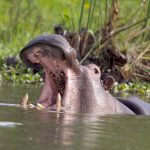

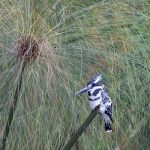

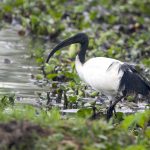
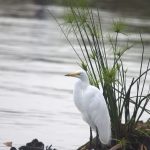
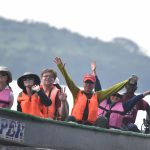
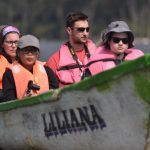
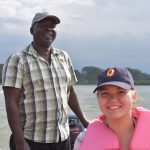
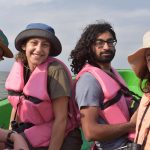
Leave a Reply